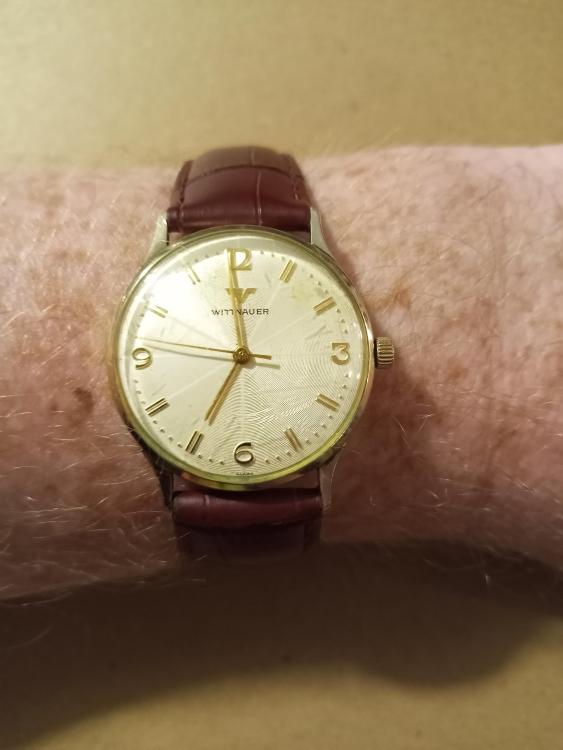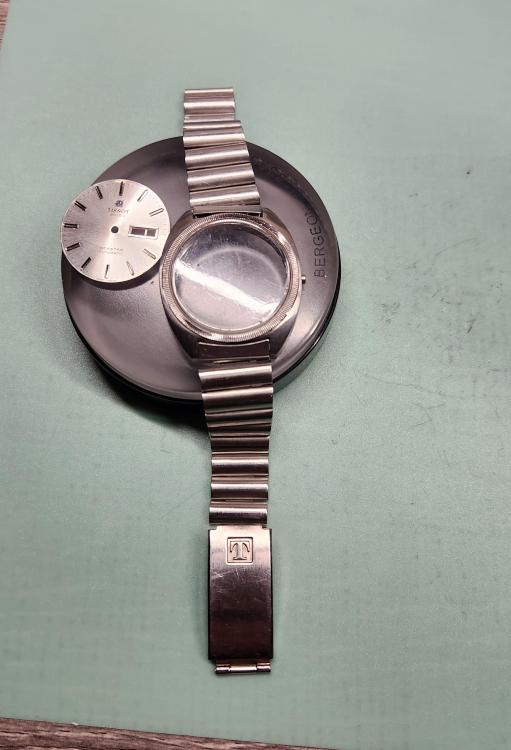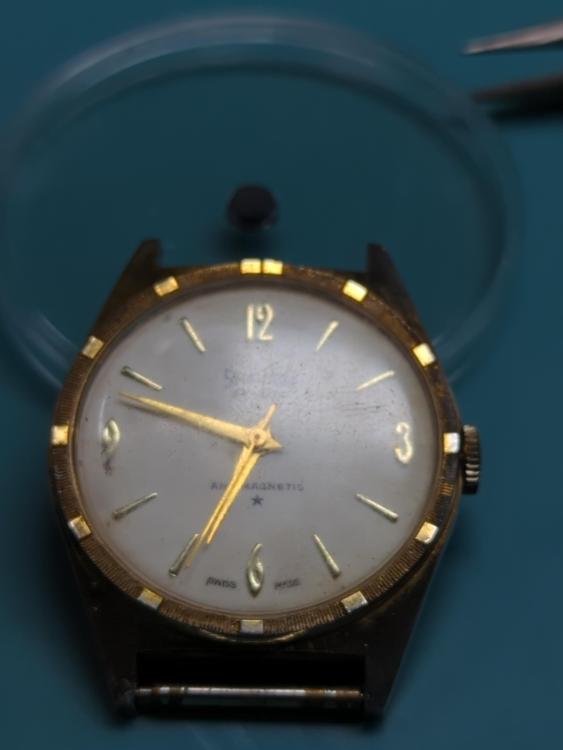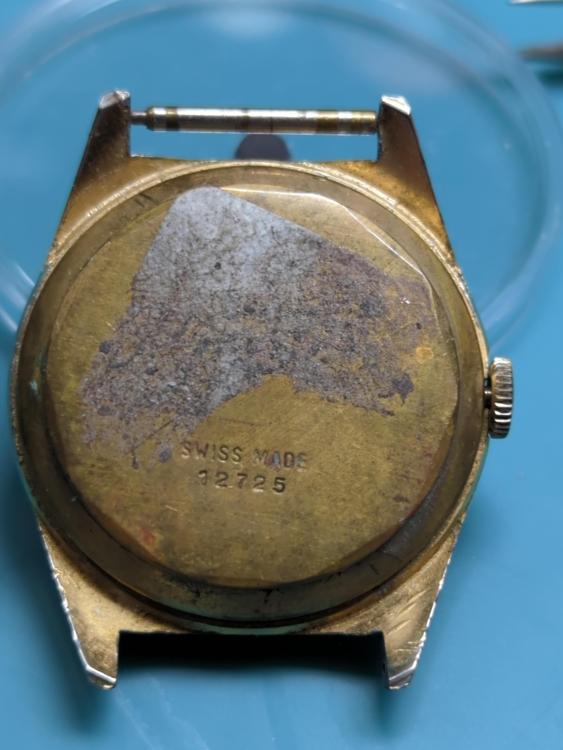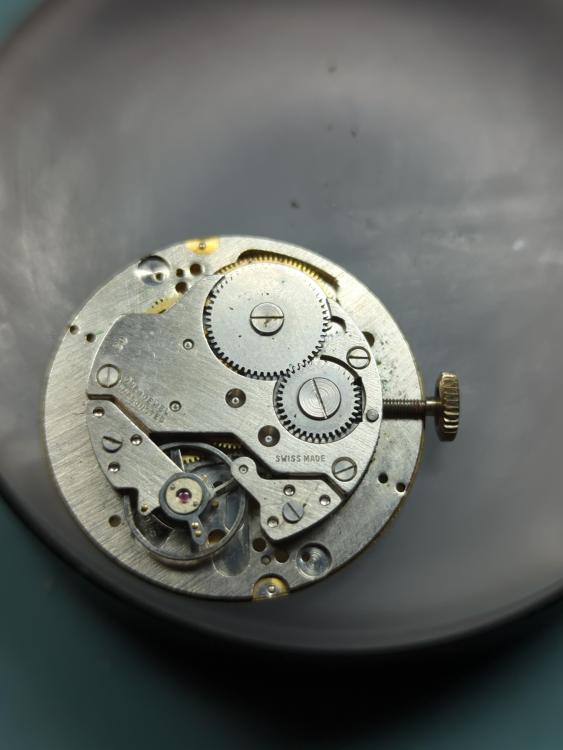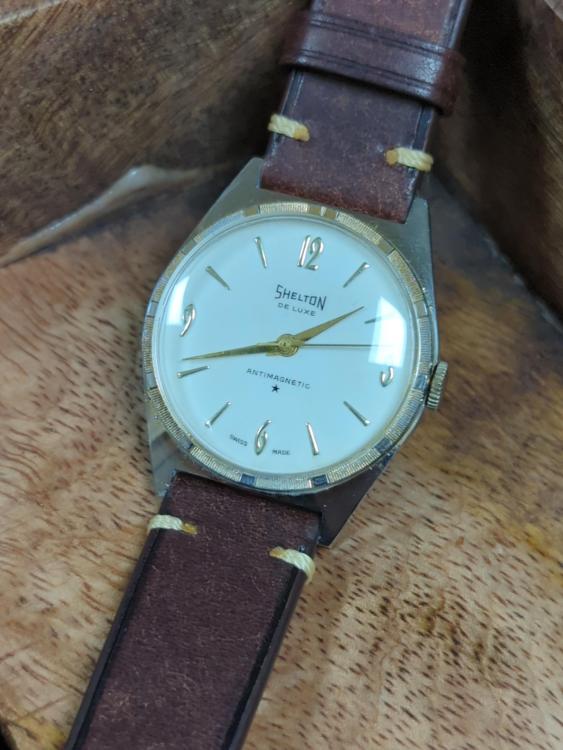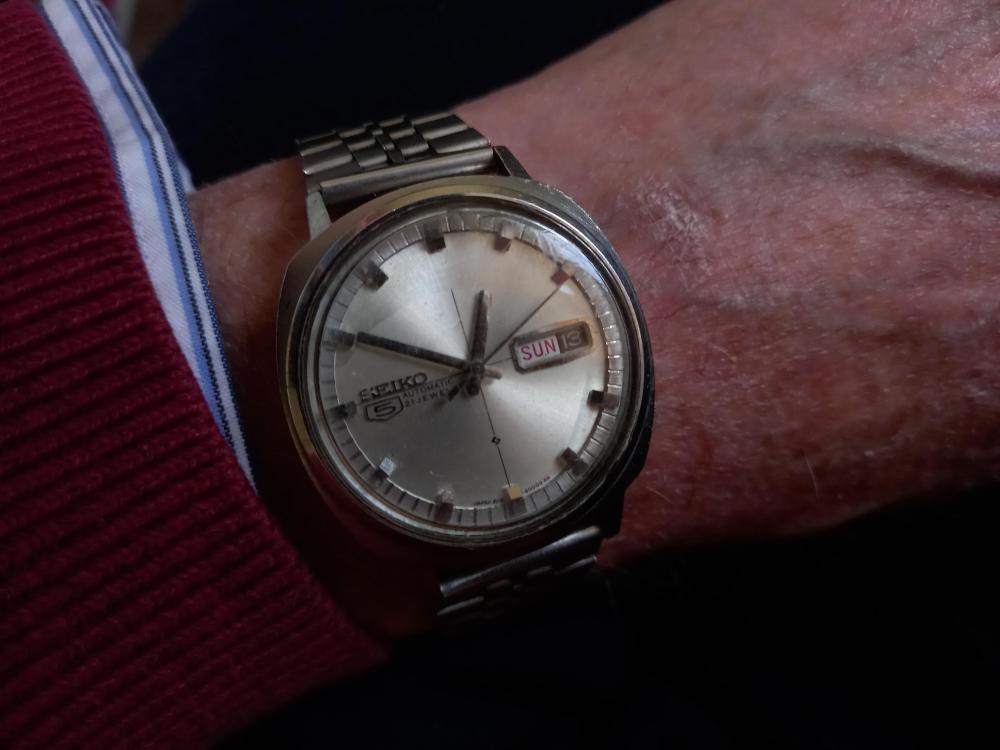Leaderboard
Popular Content
Showing content with the highest reputation on 08/28/23 in Posts
-
5 points
-
3 points
-
Welcome - sounds like you are about 6 months behind me in your journey.... The first watches I disassembled were quartz watches that were virtually given away - this gave me some experience of opening the watch case, using a loupe, picking up stuff with tweezers and practice of using screwdrivers properly. I then bought a handful of watches for around the £30 each from eBay. My strategy was simple Swiss movements that other people were bidding on and to not go over budget - I am happy with most of these purchases (even the couple of funny highly jewelled movements with pin escapements are good to learn on) I took the advice on this site and bought a $80 complete watch with an ST3600 movement, but then based on my previous experience of losing yoke springs and damaging hair springs I waited a bit before I practiced on that. With hindsight it was really nice and easy to work on and my fear destroying an $80 watch in the first 5 minutes were unfounded. With hindsight I think this is a great watch to use as you move up from being able to disassemble and assemble start cleaning and lubricating.2 points
-
the website seems to be up and running again? http://www.ranfft.de/cgi-bin/bidfun-db.cgi?10&ranfft&2 points
-
Here is my latest. A Tissot Seastar with a 2571 (US 2591 actually) automatic with day-date complications. Actually came in pieces (as pictured below) and I managed to complete a reassemble and source several parts needed. I will write up the restoration on another thread soon enough. Still need a thorough clean and lube service. The 37mm case is pretty large on my small wrist. 42mm lug to lug. With this movement and the dial-hands types I think this is a late 70s model. Really like the bezel...maybe a little Rolex-ish style wise? then after pix...2 points
-
I'm well aware of that. I once had an argument in another group for somebody absolutely insisted that you could tell the difference the top line was always and the bottom line was always and some arguments you just walk away from but let me quote the whole thing and rip it apart to make sure all on the same page as I'm still confused by what is quoted below. okay let's look at the quote which I'm having a problem with. Then I highlighted one of the lines in bold so we can see the problem. Notice it says the sounds are different and if we had the waveform which we don't it claims you can visually tell the difference. This by the way I was under the impression was impossible but it is quoted above as yes it's true. Then notice it goes on to say it uses the sound to tell them apart rather than just assuming which once again implies an absolute. Then we get to the confusion the risk of if you take the watch often put it back on again. Which is the reality of the situation if you take a watch often you put it back on the machine as far as I know there is no way of telling one from the other by listening. It may be possible with witschi and their newest or one other machines that uses an optical method it would obviously know which direction the balance wheel swinging in so that it would no but only because of that not because of the waveforms being different because as far as I know they are not accept I will comment on the waveforms in a moment then continuing on and I've made that bold the loudest is first. Then the last line is a contradiction to what I've already commented about in the same paragraph which is why have a confusion as far as I know there is no difference in the sound from one to the other except. Yes this is watch repair that always seems to be exceptions. If you have access to something with our oscilloscope and you can look at the waveform like the witschi we have at work I can see 4 waveforms unless of course you're running a higher frequency watch which I typically never do that I've noticed we can get six. So what I've noticed when you look at the oscilloscope is it's not an exact science there is variations for a whole variety of reasons. Then I have noticed were sometimes some of them the loudness does seem to very but that's only occasionally I was interpreted to something else. So as far as I know there should be no difference between exit and entry as far as audio sound goes for analysis but the above paragraph indicates that I'm wrong. But also confusingly indicates that I might be right which is why I'm confused1 point
-
can't remember if I gave you the 992B document in a case I'm reattaching it. So on a minor irritations of horological documentation from the companies is that sometimes the information is scattered across several documents. Or basically it's mentioned in one but not mentioned in another even though it's relevant. Hamilton 992B.PDF1 point
-
I notice the pallets are of center to the escape wheel, have you noticed that? When it comes to oiling the chain I would just wipe it in oil just a few drops on a clean cloth. The finish looks good.1 point
-
1 point
-
Newest version of tg color codes the two beats in the paper strip graph. The sounds are different for the entry pallet vs the exit pallet, as one can see in the two waveforms it shows. It uses the sounds to tell them apart, rather than just assuming each detected tick will alternate. There is some risk of making a different choice of which sound should be the "first" if the app is restarted. The loudest is first, but there is some variation between the teeth of the escape wheel and for other reasons, so it might always be the case that the entry or exit pallet is loudest.1 point
-
On a roll this weekend and did another 404, this time a Shelton Cal BF158 which came as part of a job lot so cost £2.22. It was a runner, but couldn't get a timegraph trace, but when I finished it got it to -12 s/d, 248 degrees amplitude and a beat error of 1.6. As this is a pin pallet I decided to cut my losses and be content with those figures. I used some flitz to clean up the case and it took all the gold off instantly leaving me with a two tone watch with a silver case and gold bezel which I actually prefer to the original all gold finish. The dial was made of a card almost like paper, so used a pencil eraser to clean it up and it worked a treat! Here are the before and after shots : And here is the finished watch:1 point
-
Watch of today. I've finally finished the Seiko 6119. Thank you folks. Not the 6119a I was recently posting about. Still haven't got the correct crown. However?..... I obtained a 6119 which was a 'b'. I did a teardown. Clean and full service. It came without a strap, so I've found a strap from another Seiko purchased last year. Not a great photograph, but, thank you to all. I'm on the way, getting there. Great fun this hobby.1 point
-
The problem is do people grasped what they need to learn to avoid the problem? What makes you think going to a professional school would help with this? When I went to my second watch repair school everybody there was supposed to have completed an accredited school. But my amusement was that all the schools were teaching watch repair differently everybody had differing knowledge and skills because there wasn't any kind of a standard for which they were teaching to. Then even with standards there's still missing a lot of knowledge that's needed to repair watches. Sometimes the best people at repairing watches are not the professional watchmakers. That's because you don't have customers screaming because they want their watch yesterday. You can take your time you can look at the problem and if you're capable of learning by researching and figuring out what the problem is conceivably you can be better than the professionals. It's amazing all the silly mistakes I've seen professionals make that they shouldn't be. Yes all of us need to do that. The positive of when the watch runs whenever that may be if that ever happens. Yes I have a bad attitude I work on vintage watches and their a pain in the ass and they don't always run. I can't give anyone a timeframe of when they're going to be finished. I can't guarantee that they're going to run ever. They may be worn out which is unacceptable to customers who don't understand that. So yes we need to embrace the positive wherever it may be lurking. Just unfortunately not necessarily in the watch were trying to work on.1 point
-
1 point



.thumb.jpg.4f4f45149566cdebb9fcb3dfd1c13f26.jpg)
